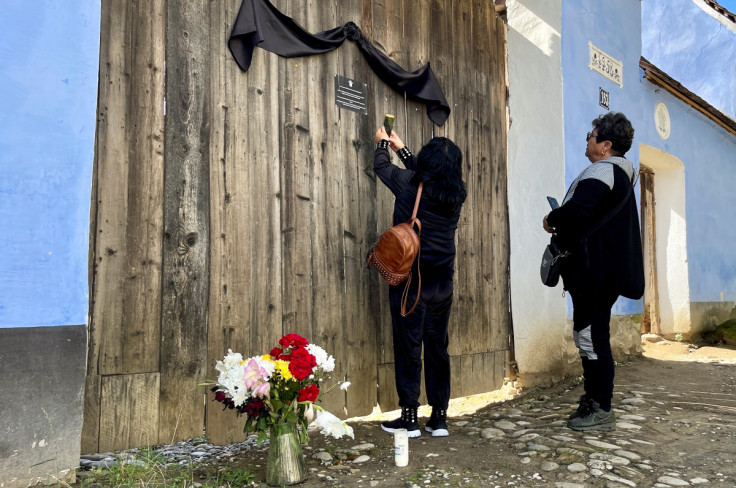In Transylvanian Saxon Village, Britain's King Charles Is A Good Neighbour

For many people in the Transylvanian village of Viscri in central Romania, Britain's King Charles has been a gracious and engaged neighbour.
The monarch, who is distantly related to Romania's former King Michael, has bought and restored an 18th century Saxon cottage in the hillside village, and has made many visits to UNESCO World Heritage site known for its medieval fortified church and architecture.
He first visited Transylvania - where he claims ancestors, including Vlad Tepes, the 15th century ruler who inspired Bram Stoker's literary Count Dracula - in 1998 as Prince of Wales, and was enchanted by its biodiversity and resilience despite the poverty which still plagues parts of rural Romania.
Since then, he has renovated properties which can be rented, with the proceeds supporting his local charity foundation. This has helped put Viscri and other parts of Transylvania on the world map of tourism.
Charles was officially proclaimed king on Saturday following the death of Queen Elizabeth last Thursday.
The wood gates of his Viscri cottage, used as a training and exhibition centre by his foundation, have been draped with black mourning ribbons.
Nearby, horses were drinking from the village trough and geese roamed. Horse carts and cars mingled on dirt and gravel roads.
"It is of great pride that the prince supports and fights for ecology, for the preservation of the region's authentic architecture," said Mihaela Rodier, 62, a visiting pensioner.
Charles' charity as well as other groups he has chaired over the years have helped with heritage restoration, infrastructure works and sustainable farming courses. They also support small farmers and craftsmen to promote their goods.
On regular official and private visits, Charles has attended county fairs, visited schools, sampled local jams and brandy, and tapped his feet in rhythm to folk music. In 2019, he attended an Orthodox church service with Romanians working in London.
Camelia Badica runs one of Viscri's two grocery shops and stocks wool socks and slippers handmade by an association of women, as well as honey and jams made from local rhubarb, blackberries and apples.
"The association existed before he came here, but of course, these droves of tourists have improved sales and women's work," she said.
The influx of tourists is not universally loved, with some local people complaining about traffic and disruptions.
Saxon villages have seen a resurgence in the past 15 years, with entrepreneurs snapping up abandoned properties across southeast Transylvania. And while resurgence has created jobs, it has also driven up property prices and living costs.
More than 40% of Romania's 19 million people live in the countryside, which has massive infrastructure investment needs.
In 2018, Charles commissioned "The Transylvania Florilegium," a collection of botanical illustrations of wild flowers found near his properties in Viscri and nearby Valea Zalanului, an ode to the Romanian landscape and a warning to the perils of intensive agriculture and climate change.
"In no other place in Europe have I found such well preserved and such productive landscapes," Charles said during a May visit to Romania to meet Ukrainian war refugees and attend a cross-European tree planting project.
"All who travel here have something to learn from the way Romania has been able to rely on regenerative approaches to create species-rich systems and socio-ecologically rich landscapes in areas such as Transylvania, where people still live in harmony with nature."
© Copyright Thomson Reuters 2024. All rights reserved.











